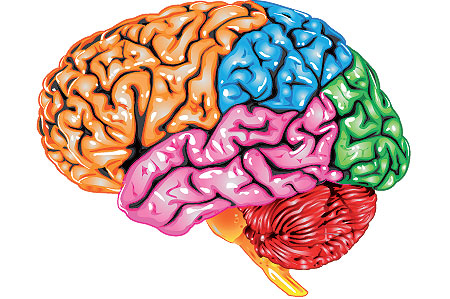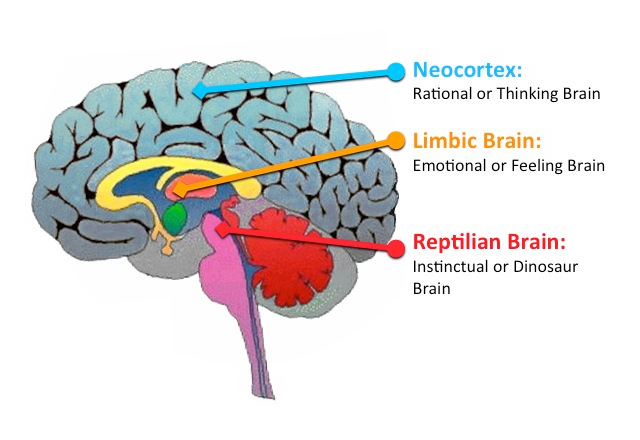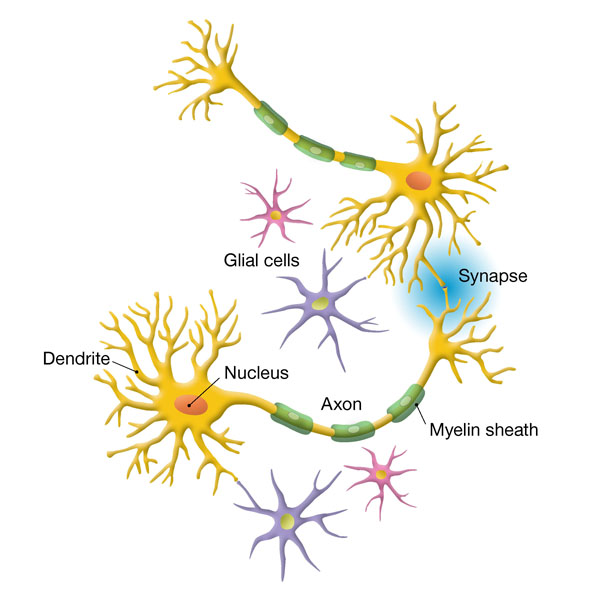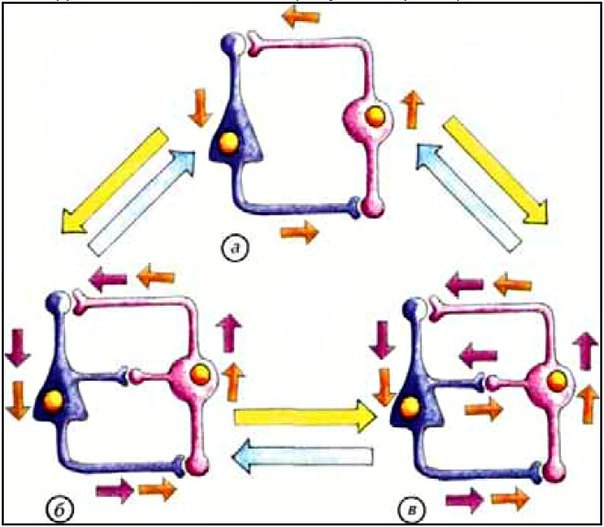Mechanisms and principles of the memory of the human brain

The reason for writing this article was the publication of material by American neurologists on measuring the memory capacity of the human brain, and presented on GeekTimes a day earlier.
In the prepared material I will try to explain the mechanisms, features, functionality, structural interactions and features in the work of memory. Just why it is impossible to draw analogies with computers in the work of the brain and to carry out calculus in units of measurement of machine language. The article uses materials taken from the works of people who have dedicated their lives to not easy work in the study of cytoarchitecture and morphogenetics, confirmed in practice and having results in evidence-based medicine. In particular, the data are used Saveliev S.V. scientist, evolutionist, paleoneurologist, doctor of biological sciences, professor, head of the laboratory of the development of the nervous system of the Institute of Human Morphology RAS.
Before we proceed to the consideration of the issue and the problem as a whole, we will formulate the basic ideas about the brain and make a number of explanations that allow us to fully appreciate the presented point of view.
')
The first thing you need to know is: the human brain is the most variable organ, it differs in men and women, race and ethnic groups, the variability is both quantitative (brain weight) and qualitative (organization of furrows and convolutions), in different variations this difference turns out to be more than double.
Second: the brain is the most energy-intensive organ in the human body. With a weight of 1/50 of body weight, it consumes 9% of the energy of the whole body in a calm state, for example, when you are lying on the couch and 25% of the energy of the whole body, when you actively begin to think, huge costs.
Third: due to the high energy consumption, the brain is cunning and selective, any energy-dependent process is unprofitable for the body, which means that without an extreme biological need, such a process will not be supported and the brain tries to save the body's resources by any means.
Here, perhaps, are three main points from a far from complete list of features of the brain that will be needed when analyzing the mechanisms and processes of human memory.
What is memory? Memory is a function of nerve cells. Memory does not have a separate, passive energy system, which is a favorite topic of physiologists and psychologists, advocates of the idea of intangible forms of memory, which is refuted by the sad experience of clinical death, when the brain stops receiving the necessary blood supply and after about 6 minutes after clinical death, irreversible processes begin and memories disappear forever. If memory had an energy-independent source, it could recover, but this does not happen, which means the dynamism of memory and constant energy consumption for its maintenance.
It is important to know that the neurons that determine human memory are located predominantly in the neocorttox. The neocortex contains about 11 billion. neurons and many times more glia. (Glia is a type of cells of the nervous system. Glia is a medium for neurons. Glial cells serve as a supporting and protective apparatus for neurons. Glial cell metabolism is closely related to the metabolism of the neurons they surround.
Neocortex:

Glia, neuron connections:

It is well known that information is stored in memory at different times, there are such concepts as long-term and short-term memory. Events and phenomena are quickly forgotten, if not updated and repeated, which is another confirmation of the dynamic memory. Information is held in a certain way, but disappears in the absence of demand.
As mentioned earlier, memory is a volatile process. No energy - no memory. The consequence of the memory volatility is the instability of its content. Memories of past events are falsified in time, down to complete inadequacy. There is no time account for memory, but it is replaced by the speed of forgetting. The memory of any event decreases inversely with time. An hour later, ½ of everything in memory is forgotten, in a day - 2/3, in a month - 4/5.
Consider the principles of memory, based on the biological feasibility of the results of its work. The physical components of memory consist of nerve paths that unite one or more cells. They include zones of gradual and active signaling, various systems of synapses and bodies of neurons. Imagine an event or event. The man was faced with a new, but quite important situation. Through certain sensory connections and sense organs, the person received various information, the analysis of the event ended with a decision. At the same time, the person is pleased with the result. Residual arousal remains in the nervous system - the movement of signals through the networks that were used to solve the problem. These are the so-called “old chains” that existed before the situation with the need to memorize information. Maintaining the circulation of different information signals within one structural chain is extremely energy-intensive. Therefore, the preservation in memory of new information is usually difficult. During repetitions or similar situations, new synaptic connections between cells can form and then the information obtained will be remembered for a long time. Thus, memorization is the preservation of the residual activity of the neurons of the brain region.
The memory of the brain is a forced compensatory reaction of the nervous system. Any information goes into temporary storage. Supporting the stability of short-term memory and the perception of signals from an external energy source is extremely expensive, new stimulating signals arrive at the same cells and transmission errors accumulate and energy resources are being overspent. However, the situation is not as bad as it looks. The nervous system has a long-term memory. Often, it transforms reality in such a way that it makes the original objects unrecognizable. The degree of modification of the object stored in the memory depends on the storage time. Memory keeps memories, but changes them as the owner wants. The basis of long-term memory are simple and random processes. The fact is that neurons all their life form and destroy their connections. Synapses are constantly forming and disappearing. Quite approximate data suggest that this process of spontaneous formation of a single neural synapse can occur in mammals approximately 3-4 times in 2-5 days. Collateral branching containing hundreds of different synapses occurs more rarely. A new polysynaptic collateral is formed in 40-45 days. Since these processes occur in each neuron, it is quite possible to estimate the daily capacity of long-term memory for any of the animals. It can be expected that about 800 million new connections between cells will be formed daily in the cortex of the human brain and approximately the same number will be destroyed. Long-term memorization is the inclusion in the newly formed network of areas with completely unused, newly formed contacts between cells. The more new synaptic contacts participate in the network of primary (short-term) memory, the more chances this network has to survive for long.
Memorization and forgetting information. Short-term memory is formed on the basis of existing connections. Its appearance is indicated by orange arrows on fragment b. Along the same paths, signals containing both old (purple arrows) and new (orange arrows) information circulate. This leads to extremely costly and short-term storage of new information based on old connections. If it is not important, then the energy costs of maintaining it are reduced and forgetting occurs. When storing a “short-term”, but which has become the necessary information, new physical connections between the cells are formed according to the fragments ab-bc. This leads to long-term memorization based on the use of newly articulated bonds (yellow arrows). If the information remains unclaimed for a long time, then it is supplanted by other information. In this connection can be interrupted and there is a forgetting on the fragments of the BB or a-a (blue arrows). "

From the above, it is clear that the brain is a dynamic structure that is constantly rebuilt and has certain physiological limits, just as the brain is an overly energy-intensive organ. The brain is not physiological, but morphogenetic, because its activity is incorrect and incorrect to measure in the systems used and applicable in information technology. Because of the individual variability of the brain, it is not possible to draw any conclusions summarizing various functional indicators of the human brain. Mathematical methods are also not applicable in calculating the structural interaction in the human brain, because of the constant change, interaction and rebuilding of nerve cells and the connections between them, which in turn brings to an absurdity the work of American scientists in the study of the human brain's memory capacity.
Source: https://habr.com/ru/post/371661/
All Articles